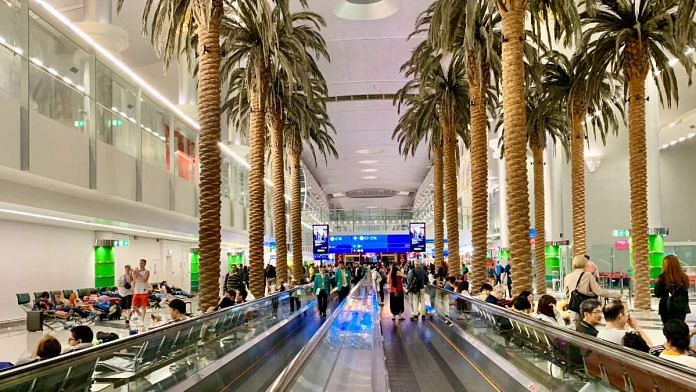Airports are critical economic engines. They provide millions of jobs around the world, support billions in economic activity and facilitate trade and tourism. And, like many businesses, they are undergoing a massive transformation to meet the changing needs of passengers, airlines, businesses and society.
A new report by the Oliver Wyman Forum, Airports Council International, and the Sustainable Tourism Global Center finds that the airport transformation will be considerable and costly, but is already underway. The report, Evolution of Airports – Travel Trends in the Next 30 Years draws on proprietary data and interviews with 18 global airport CEOs. It identifies five megatrends shaping airport evolution in coming decades. These are:
1. The race to achieve net zero
2. Technological innovation
3. Intermodal connectivity
4. A changing workforce
5. The passenger experience revolution
Reducing carbon emissions
One of the biggest challenges for airports is meeting the aviation industry’s goal of net zero emissions by 2050, while also accommodating significant growth in the number of passengers, which is expected to triple to 19 billion by 2040.
To meet this target, airports should focus this decade on reducing emissions from their buildings and vehicles. This includes shifting to electric transportation, adding renewable energy sources, such as solar and wind, and using more efficient lighting and cooling systems, which account for nearly half their energy use. Longer term, significant public and private investment will be needed to transform airports into energy hubs and producers as aircraft switch to sustainable fuels.
Some airports, such as Geneva Airport, are already significantly reducing their emissions. The Swiss facility has added thousands of solar panels and updated buildings with efficient LED lights and other energy-saving devices. Geneva plans to decarbonize 90% of its vehicle fleet by 2030 by retrofitting buses with electric engines.
Making intermodal connections
Airport hubs are vital connectors and economic engines for communities. The increased focus on reducing emissions makes it even more important for them to link with other transportation networks. Building rail infrastructure to and from airports provides potentially faster and more sustainable ways to travel.
Geneva Airport is already well-connected. About half of its passengers use public transit to get there. The Swiss airport aims to increase that to 60% by 2030 by offering free bus and train tickets to arriving passengers. “We have the national railway system, which has its station within the airport and we are a hub for buses, so we are already well integrated and working to improve further,” said Geneva Airport CEO André Schneider.
Innovating with technology
Passengers are eager to fly and are tired of delays and security bottlenecks. They want contactless experiences and enhanced facilities with everything from food delivery and comfortable lounges to entertainment and boutique stores.
Airports can meet these demands by investing in automation, artificial intelligence and other technologies that improve efficiencies and create seamless, safer and contactless passenger experiences. Biometrics, for example, are already available in some airports and are expected to replace paper passports, boarding passes and other travel documents in the near future. Similarly, automation enables airports to align with mass transit systems for more efficient and greener travel.
Dubai International Airport has implemented smart gates and biometric facial recognition to speed passengers through check-in, boarding and immigration by linking people’s retina scans to their passports. The system also enables them to screen carry-on baggage without having travellers remove devices. These technologies require increased cyber security, but nearly two-thirds of passengers are willing to share biometrics for an easier travel experience.
Training for the future
More than half of the 11.3 million people in the aviation industry work in airports. Labour shortages across all airport jobs, from pilots and mechanics to baggage handlers and air control staff, worsened during the COVID-19 pandemic and threaten the industry’s ability to meet the growing travel demands. One of the biggest challenges is the pilot shortage. The longstanding trend worsened during the pandemic and could impact travel, with an estimated 60,000 additional pilots needed globally by 2032, according to Oliver Wyman.
In coming decades, airports will need a multi-skilled workforce: one group with the engineering, digital and cybersecurity skills to manage the high-tech operations, and another with soft skills that can fill customer-interfacing roles. AI and other technology could help address some of the challenges from routine jobs, but reskilling and retention will be key. Singapore’s Changi Airport has managed some of these challenges and was named one of the city-state’s most attractive employers for providing career progression, interesting job content and innovative technologies.
Transforming the customer experience
Passengers expect more from airports — and a growing number are responding with better lounges, amenities and retail experiences. Airlines are eager for more lounges to provide customer experiences, such as cinemas, pools and virtual-reality gaming options, in case flights are delayed.
Singapore has taken this to a new level by building an ‘aerotropolis’ or airport city. The dome-shaped jewel complex features lush gardens, the world’s tallest indoor waterfalls and numerous other amenities, making it a destination and economic centre, as well as a place to fly. These are “urban campuses that contain offices, hotel,s retail offerings, but also entertainment and different modes of transport to the airport,” said Brisbane Airport CEO Gert-Jan De Graaff.
Airports face significant challenges, but also opportunities. Preparing for the future requires creativity, commitment and cash – but these changes could also provide improved customer service, business opportunities and a greener future. Fortunately, we know what it takes to provide seamless, pleasant and personalised travel experiences. It’s now time for airports to make the journey.
This article was originally published in the World Economic Forum.
Also read: Ferrovial to expand AI use at Heathrow, on toll roads by 2024



